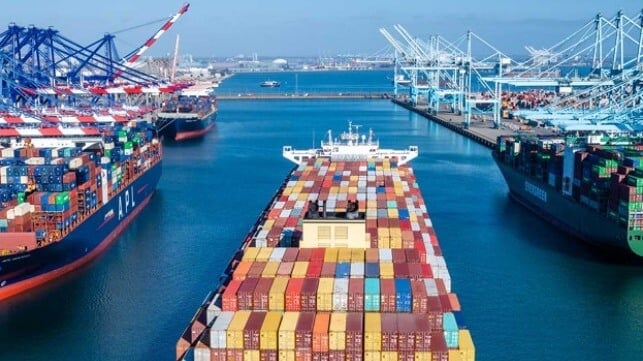US Warns Ships to Pay USTR Port Fees Before Arrival or Face Denials

U.S. Customs and Border Protection issued the first guidance for the pending USTR Section 301 Vessel Fees related to Chinese-owned, operated, or built ships, warning operators that the fees are their responsibility and should be paid at least three days before arrival at their first U.S. port. It was the first statement to provide clarification and a further indication that the U.S. is still preparing to implement the fees on October 14.
A statement from CBP was anticipated to provide guidance on the payment mechanisms for the fees, which range from $50 per net ton for Chinese-owned or operated ships to $18 per net ton, or $120 per container discharged, for Chinese-built ships. Car and vehicle Ro-Ros are paying $14 per net ton. The fees are due before the ship arrives at its first U.S. port, and each ship will pay up to five times per year.
“The burden for determining if a vessel owes the fee is on the operator, NOT CBP,” the statement emphasizes. “Responsible parties are strongly encouraged to pay fees prior to vessel arrival as vessels without proof of payment will be subject to denial of lading or unlading operations, or granting of clearance withheld, until proof of payment can be verified.”
As expected, CBP is using the pay.gov website, warning operators not to expect to pay at the port of entry. The website will calculate the fees once the basic parameters are selected and the vessel information is provided. Payment will be made through electronic bank transfers.
Overall, the statement contained no significant new information for the shipping community ahead of the introduction of the fees. There is still a lot of uncertainty in the details of the program, and the shipping community is waiting for guidance. Jeanne Grasso, a partner at the law firm Blank Rome, notes they are still waiting on the FAQ expected from the U.S. Trade Representative.
Another uncertainty is the current shutdown of the U.S. federal government due to a budget dispute with the U.S. Congress. The USTR was among the agencies that were furloughing most of their staff until the budget is resolved.
Carriers have been working to redeploy vessels in anticipation of the beginning of the fee program, which has been delayed since April 2025. However, analysts have still estimated that the top 10 container carriers alone could face fees of more than $3.2 billion in 2026. Yet, despite the price tag, many of the carriers continue to order new vessels to be built in China.
The original goal of the USTR program was to penalize China for its unfair business practices with its shipbuilding industry and its rapid rise to market dominance, as well as China's efforts at exerting influence over the shipping industry broadly. The Trump administration added the additional fees on all foreign-built car and vehicle carriers and adopted measures that had been promoted in Congress for LNG carriers. In the first phase, LNG carriers are exempt from the fees, but the program sets longer-term goals for a portion of U.S. LNG exports to be carried on U.S.-built LNG carriers.
